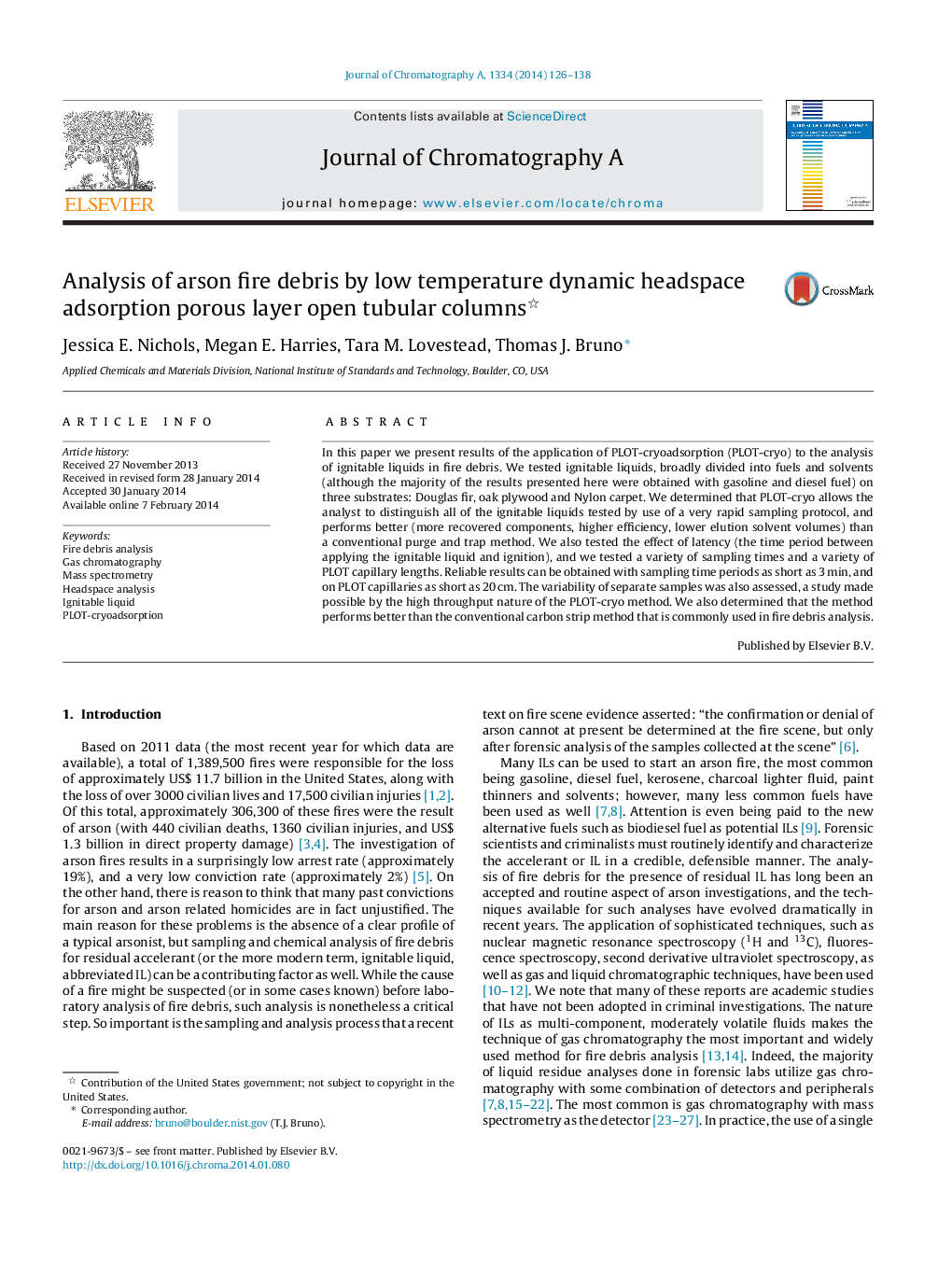| Article ID | Journal | Published Year | Pages | File Type |
|---|---|---|---|---|
| 1200036 | Journal of Chromatography A | 2014 | 13 Pages |
•PLOT-cryoadsorption performs better than conventional purge and trap in a direct comparison of headspace vapor samples.•PLOT-cryoadsorption applied to fire debris was able to easily distinguish between ignitable liquids.•PLOT-cryoadsorption was faster than conventional measurement methods, and could be performed on small or large samples.•Effective vapor collections can be done on PLOT capillaries as short as 20 cm.•PLOT-cryoadsorption can be performed on 8 samples, simultaneously.
In this paper we present results of the application of PLOT-cryoadsorption (PLOT-cryo) to the analysis of ignitable liquids in fire debris. We tested ignitable liquids, broadly divided into fuels and solvents (although the majority of the results presented here were obtained with gasoline and diesel fuel) on three substrates: Douglas fir, oak plywood and Nylon carpet. We determined that PLOT-cryo allows the analyst to distinguish all of the ignitable liquids tested by use of a very rapid sampling protocol, and performs better (more recovered components, higher efficiency, lower elution solvent volumes) than a conventional purge and trap method. We also tested the effect of latency (the time period between applying the ignitable liquid and ignition), and we tested a variety of sampling times and a variety of PLOT capillary lengths. Reliable results can be obtained with sampling time periods as short as 3 min, and on PLOT capillaries as short as 20 cm. The variability of separate samples was also assessed, a study made possible by the high throughput nature of the PLOT-cryo method. We also determined that the method performs better than the conventional carbon strip method that is commonly used in fire debris analysis.
